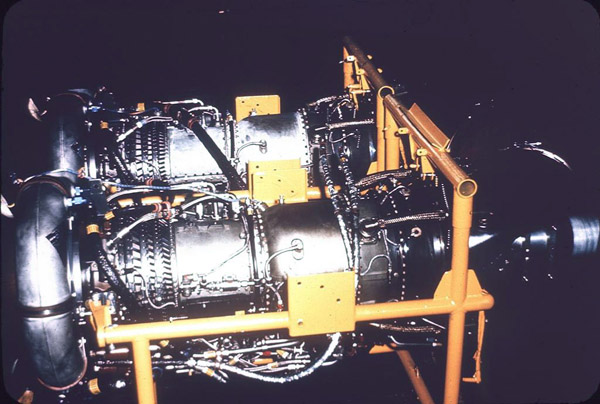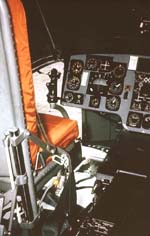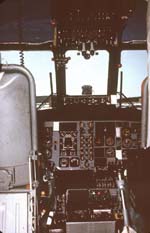| Over Dartmouth N.S. Micmac Mall and Lake
Banook are to the right with Lake Micmac to the left. This photo of "Savage
40" shows a modernized Sea King painted up in a vintage scheme for some
centennial celebration (unknown at this time). When radar was introduced
into the Sea King, the helicopters were painted up in the new low-IR
paint scheme. Everything was painted in a flat mat finish to reduce
'glint', which the missile IR seeker could 'see' and home on. Besides
being VERY expensive, the paint was very toxic and it had to be applied
in a special paint booth at IMP Halifax.
The early IR missile seekers were sighted slightly off the longitudinal
axis of the missile, and rotated with the missile as it spun around the
axis for stability while in forward flight. The missile control would
vector the missile to keep the amplitude of the IR signature equal all
around as the scanner rotated. Crude but effective. The IR
flares were designed to ignite very close to the aircraft and draw the
missile away as it 'fell away' through a combination of aircraft forward
motion and flare gravity free fall. As you can imagine the 'miss
distance' wasn't a whole lot.
Later seekers were more sophisticated (i.e. gimballed and shutters,
etc.) and the response in part was the IR heat lamp that you see on (for
example) the Gulf War birds. It was VERY hot and the lamp rotated.
It was designed to present a modulated signal which again would cause the
missile seeker to 'think' that the aircraft was slightly off the true missile/aircraft
line of site, again leading to a near miss. |
| Over Sable Island. David Wall recalls the early
days of flying the Sea King. " The crew in the back just operated the sonar,
the hoist and had a supply of smoke floats to be tossed out the door. That
was it – the “co-pilot” was the navigator. I say co-pilot because we used
to switch seats on a trip-by-trip basis so the Crew Commander could be
in the left seat doing “co-pilot” duties while the second-in-command flew
from the right seat. There was never any question who was in command
However I don’t recall doing a lot of “search plotting” although we
were trained to do it and must have done some but most of our time at sea
was spent under strict radar control from (usually) one or more DDE’s in
the screen or possibly the carrier (Highground). We acted purely as an
extension of the ASW screen and while we plotted our own sonar data on
the old Mk VI board I think we passed it all back to the ship that was
controlling us.We certainly had nowhere near the independent cabapility
that came as a result of advancing technology.
Of course, the best combination was a Tracker overflight on a MADVEC
(Magnetic Anomoly Detector Vector) from the Sea King.". |









